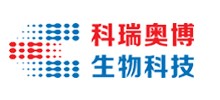产品中心
当前位置:首页>产品中心Anti-WASP/PE-Cy7
货号: bs-13681R-PE-Cy7 基本售价: 2980.0 元 规格: 100ul
产品信息
- 产品编号
- bs-13681R-PE-Cy7
- 英文名称
- Anti-WASP/PE-Cy7
- 中文名称
- PE-Cy7标记的湿疹血小板减少伴免疫缺陷综合征相关蛋白抗体
- 别 名
- Eczema thrombocytopenia; IMD2; SCNX; THC; THC1; Thrombocytopenia 1 (X linked); U42471; Was; WASp; WASP_HUMAN; Wiskott Aldrich syndrome (eczema thrombocytopenia); Wiskott Aldrich syndrome; Wiskott Aldrich syndrome protein; Wiskott-Aldrich syndrome protein.
- 规格价格
- 100ul/2980元购买 大包装/询价
- 说 明 书
- 100ul
- 研究领域
- 细胞生物 免疫学 细胞分化 细胞骨架
- 抗体来源
- Rabbit
- 克隆类型
- Polyclonal
- 交叉反应
- Human, Mouse, Rat, Cow, Rabbit,
- 产品应用
- ICC=1:50-200 IF=1:50-200
not yet tested in other applications.
optimal dilutions/concentrations should be determined by the end user.
- 分 子 量
- 53kDa
- 性 状
- Lyophilized or Liquid
- 浓 度
- 1mg/ml
- 免 疫 原
- KLH conjugated synthetic peptide derived from human WASP
- 亚 型
- IgG
- 纯化方法
- affinity purified by Protein A
- 储 存 液
- 0.01M TBS(pH7.4) with 1% BSA, 0.03% Proclin300 and 50% Glycerol.
- 保存条件
- Store at -20 °C for one year. Avoid repeated freeze/thaw cycles. The lyophilized antibody is stable at room temperature for at least one month and for greater than a year when kept at -20°C. When reconstituted in sterile pH 7.4 0.01M PBS or diluent of antibody the antibody is stable for at least two weeks at 2-4 °C.
- 产品介绍
- background:
The Wiskott-Aldrich syndrome (WAS) is a disorder that results from a monogenic defect that has been mapped to the short arm of the X chromosome. WAS is characterized by thrombocytopenia, eczema, defects in cell-mediated and humoral immunity and a propensity for lymphoproliferative disease. The gene that is mutated in the syndrome encodes a proline-rich protein of unknown function designated WAS protein (WASP). A clue to WASP function came from the observation that T cells from affected males had an irregular cellular morphology and a disarrayed cytoskeleton suggesting the involvement of WASP in cytoskeletal organization. Close examination of the WASP sequence revealed a putative Cdc42/Rac interacting domain, homologous with those found in PAK65 and ACK. Subsequent investigation has shown WASP to be a true downstream effector of Cdc42.
Function:
Effector protein for Rho-type GTPases, providing a link with the Arp2/3 complex that regulates the structure and dynamics of the actin cytoskeleton. Important for efficient actin polymerization. Possible regulator of lymphocyte and platelet function.
Subunit:
Interacts with NCK1 (via SH3 domains). Interacts with CDC42, RAC, NCK, HCK, FYN, SRC kinase FGR, BTK, ABL1, PSTPIP1, WIP, and to the p85 subunit of PLC-gamma. Binds the Arp2/3 complex. Interacts (via C-terminus) with ALDOA. Interacts with E.coli effector protein EspF(U).
Subcellular Location:
Cytoplasm; cytoskeleton.
Tissue Specificity:
Expressed predominantly in the thymus. Also found, to a much lesser extent, in the spleen
Post-translational modifications:
Phosphorylated at Tyr-291 by FYN and HCK, inducing WAS effector activity after TCR engagement. Phosphorylation at Tyr-291 enhances WAS activity in promoting actin polymerization and filopodia formation.
DISEASE:
Defects in WAS are the cause of Wiskott-Aldrich syndrome (WAS) [MIM:301000]; also known as eczema-thrombocytopenia-immunodeficiency syndrome.
WAS is an X-linked recessive immunodeficiency characterized by eczema, thrombocytopenia, recurrent infections, and bloody diarrhea. Death usually occurs before age 10.Defects in WAS are the cause of thrombocytopenia type 1 (THC1) [MIM:313900].
Thrombocytopenia is defined by a decrease in the number of platelets in circulating blood, resulting in the potential for increased bleeding and decreased ability for clotting.
Defects in WAS are a cause of neutropenia severe congenital X-linked (XLN) [MIM:300299]. XLN is an immunodeficiency syndrome characterized by recurrent major bacterial infections, severe congenital neutropenia, and monocytopenia.
Similarity:
Contains 1 CRIB domain.
Contains 1 WH1 domain.
Contains 1 WH2 domain.
Database links:Entrez Gene: 7454Human
Entrez Gene: 22376Mouse
Omim: 300392Human
SwissProt: P42768Human
SwissProt: P70315Mouse
Unigene: 2157Human
Important Note:
This product as supplied is intended for research use only, not for use in human, therapeutic or diagnostic applications.

